塞尚與柏格森(國際英文版‧新版)
配送方式
-
台灣
- 國內宅配:本島、離島
-
到店取貨:
不限金額免運費




-
海外
- 國際快遞:全球
-
港澳店取:



內容簡介
本書的重要性在於統合塞尚晚年藝術與柏格森哲學的實質研究,從而論述柏格森哲學與現代藝術的密切關係。內容共分五章,第一章陳述目前「塞尚研究」之概況,檢視各家論述重點與問題所在,並指陳可能線索與本文立場;隨之,在第二章裡,進一步將各研究者的問題加以歸類,而統合於塞尚「研究自然」的核心理念之下,辨析各說之曲直原委,並批判其優缺點,以指出柏格森線索之必要性;在第三章中,本書將探究柏格森早期重要著作之要旨,並介紹其對當時藝術發展的影響。
第四章將論證柏格森哲學與塞尚晚年藝術廣泛的類似性,並依其先後發展歷程推斷其相關性;最後一章歸結本研究的哲學意義並解答若干具有爭論性的問題,包含: 柏格森哲學的發展也持續影響到部份塞尚的後繼者,如野獸主義、立體主義與未來主義的重要成員, 於是,以二十世紀初歐洲繪畫為主體的現代繪畫的重要特質之一,可較完整地被詮釋為:以塞尚為先導、一個富有變化與創意的「柏格森風格」(Bergsonian style)之表現形式與創新發展。
The main crux of this book is to discuss the analogy between Paul Cezanne’s late works and Henri Bergson’s early philosophy, thereby providing those who are interested in or troubled by the artist’s motivation a Bergsonian interpretation.
The writer adopts the method of contrast in analyzing both their notions of “intuition and intelligence” epistemology-wise as well as “appearance and reality” metaphysics-wise. This book will also compare their respective use of abstract philosophical symbols and concrete artistic symbols.
Aside from arguing the intensive relatedness between the two in the form of book for the first time, the author also points out how Bergson’s philosophical development continued to have influence on some of Cezanne’s artistic successors, such as the main proponents of Fauvism, Cubism and Futurism.
Consequently, a principal characteristic of early 20th century French painting could be interpreted as the multiple formal expressions and innovative developments of Bergsonian style, or the crystallization of Bergsonism.
名人推薦
About Cézanne
“I have nothing to hide in art.” — Cézanne
Section 1: Introduction
This book is based on an interpretation of Bergsonian philosophy, so it is different from most discussions of Cézanne literature. However, the fruits of all distinquished scholars are very helpful in discovering problems, avoiding mistakes, and finding possible solutions. “Cézanne literature” generally refers to the interviews, memoirs, and research findings on Cézanne accumulated since 1889. The studies include various discourses, and sometimes even contrasting ones. Two kinds of general yet complementary literature are: one, historical facts, and the other, knowledge used to interpret those facts. The former stresses observations of facts from a historical perspective; the latter focuses on giving theoretical interpretations. Yet the purpose of this chapter is definitely not to give a complete and detailed account of Cézanne literature in its broad meaning. My selective discussions will be chronological and representative in presenting the main ideas and issues. After a short summary of respective theories, I will bring out my stance to criticize their value. Illustrations and diagrams will be used to compare different interpretations. Discussions of Cézanne’s artistic successors’ views will be included in Chapter Five on Fauvism, Cubism, and Futurism to support my stance and to point out the trend in the artistic developments.
This chapter ranges from 1889 to 2001, a span of one hundred and twelve years. Although the two kinds of literature mentioned above are included, for the sake of convenience, three time periods: 1889-1925, 1926-1956, and 1957-2001 will be discussed in three different sections. The periods will be categorized into two; the interviews of the first period of people who had direct contact with Cézanne will be categorized according to the dates of their happening, instead of their publication; the literature of this period is more like narratives. The second and the third period in which no direct contact had been made with Cézanne will be based on the publication date; these two periods are more interpretive. The goal of this categorization is to look back on the first period and to depict Cézanne in history; in organizing the later two periods, different theories will be understood and different literatures of varying nature will be included.
Of course, theories differ in dealing with literatures and the problem of authentication. This is because the records of people who had contact with Cézanne are often repeating other materials or are mixed with individuals’ opinions, lacking in commentaries and annotations. For example, Joachim Gasquet (1873-1921) had contact with Cézanne from 1896 to 1900. His memoir Cézanne was written in 1912 but published in 1921. It might have mixed other people’s earlier materials and the author’s own viewpoints. Moreover, the stark contrasting view points of Bernard’s early and later writings and stances are obvious: “Paul Cézanne” was written in 1904 and was stressed as a record to present the interactions with Cézanne; and “Une conversation avec Cézanne” in 1921 is highly interpretative and critical, with a purpose in establishing Bernard’s own aesthetics. These two contrasting writings cannot be treated in the same way.
In sum, historical facts and theoretical interpretations must be complementary and one cannot be overlooked over another. The credibility of historical facts needs the effectiveness of interpretations to be revealed, whereas, interpretations need historical facts as a basis to avoid being groundless and vague.
目錄
Preface
Table of Contents
Introduction
Chapter One: About Cézanne
Chapter Two: Critique of Cézanne Literature
Chapter Three: Bergson’s Philosophy
Chapter Four: When Two Masters Met
Chapter Five: Crystallization of Art and Philosophy
Index
序/導讀
本書的重要性在於統合塞尚晚年藝術與柏格森哲學的實質研究,從而論述柏格森哲學與現代藝術的密切關係。內容共分五章,第一章陳述目前「塞尚研究」之概況,檢視各家論述重點與問題所在,並指陳可能線索與本文立場;隨之,在第二章裡,進一步將各研究者的問題加以歸類,而統合於塞尚「研究自然」的核心理念之下,辨析各說之曲直原委,並批判其優缺點,以指出柏格森線索之必要性;在第三章中,本書將探究柏格森早期重要著作之要旨,並介紹其對當時藝術發展的影響。
第四章將論證柏格森哲學與塞尚晚年藝術廣泛的類似性,並依其先後發展歷程推斷其相關性;最後一章歸結本研究的哲學意義並解答若干具有爭論性的問題,包含: 柏格森哲學的發展也持續影響到部份塞尚的後繼者,如野獸主義、立體主義與未來主義的重要成員, 於是,以二十世紀初歐洲繪畫為主體的現代繪畫的重要特質之一,可較完整地被詮釋為:以塞尚為先導、一個富有變化與創意的「柏格森風格」(Bergsonian style)之表現形式與創新發展。
訂購/退換貨須知
退換貨須知:
**提醒您,鑑賞期不等於試用期,退回商品須為全新狀態**
-
依據「消費者保護法」第19條及行政院消費者保護處公告之「通訊交易解除權合理例外情事適用準則」,以下商品購買後,除商品本身有瑕疵外,將不提供7天的猶豫期:
- 易於腐敗、保存期限較短或解約時即將逾期。(如:生鮮食品)
- 依消費者要求所為之客製化給付。(客製化商品)
- 報紙、期刊或雜誌。(含MOOK、外文雜誌)
- 經消費者拆封之影音商品或電腦軟體。
- 非以有形媒介提供之數位內容或一經提供即為完成之線上服務,經消費者事先同意始提供。(如:電子書、電子雜誌、下載版軟體、虛擬商品…等)
- 已拆封之個人衛生用品。(如:內衣褲、刮鬍刀、除毛刀…等)
- 若非上列種類商品,均享有到貨7天的猶豫期(含例假日)。
- 辦理退換貨時,商品(組合商品恕無法接受單獨退貨)必須是您收到商品時的原始狀態(包含商品本體、配件、贈品、保證書、所有附隨資料文件及原廠內外包裝…等),請勿直接使用原廠包裝寄送,或於原廠包裝上黏貼紙張或書寫文字。
- 退回商品若無法回復原狀,將請您負擔回復原狀所需費用,嚴重時將影響您的退貨權益。






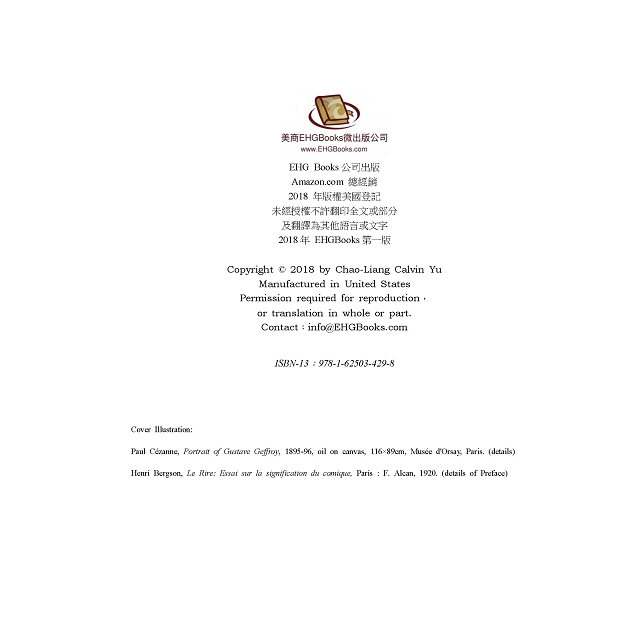


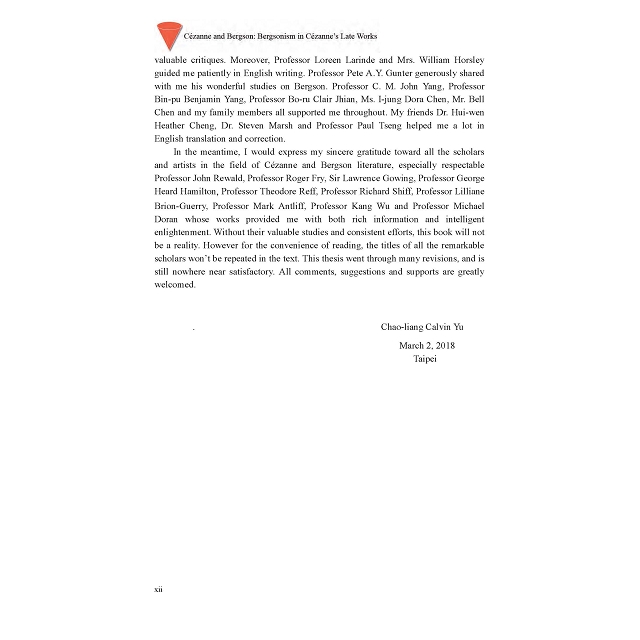
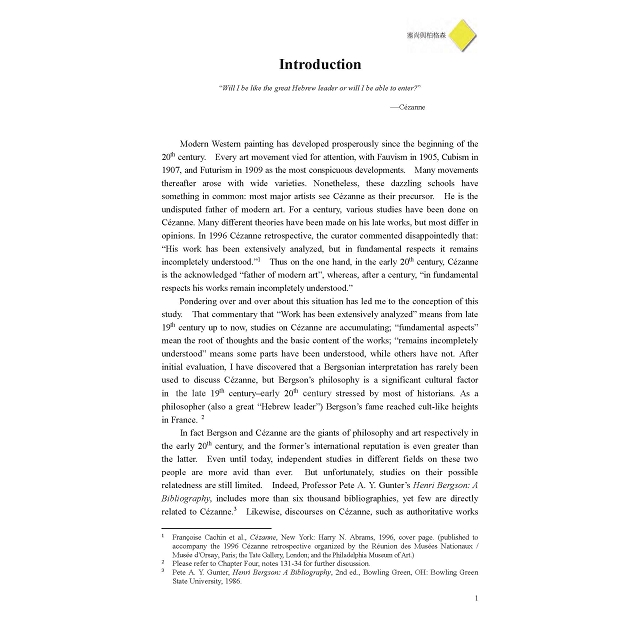
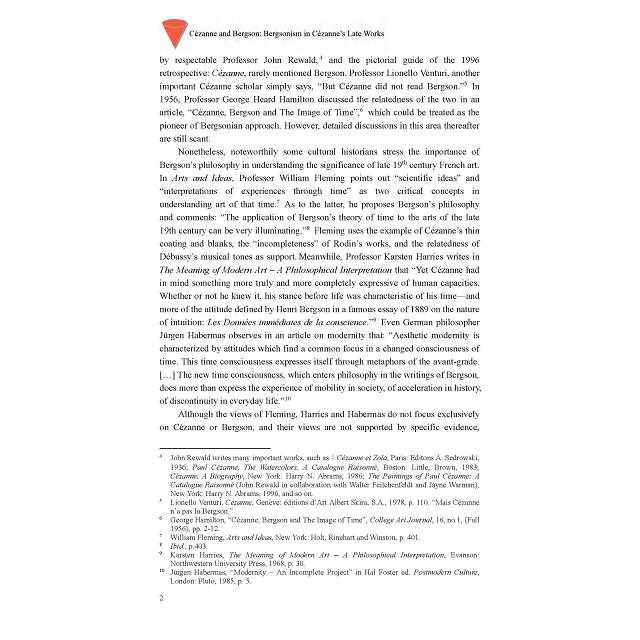


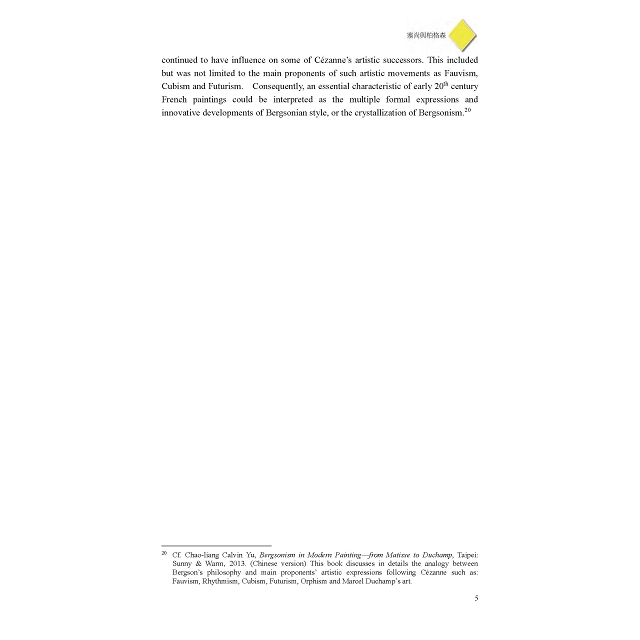


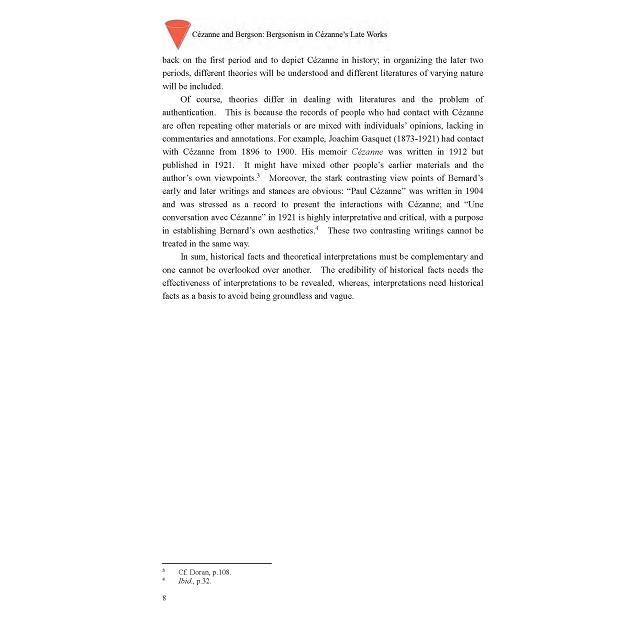

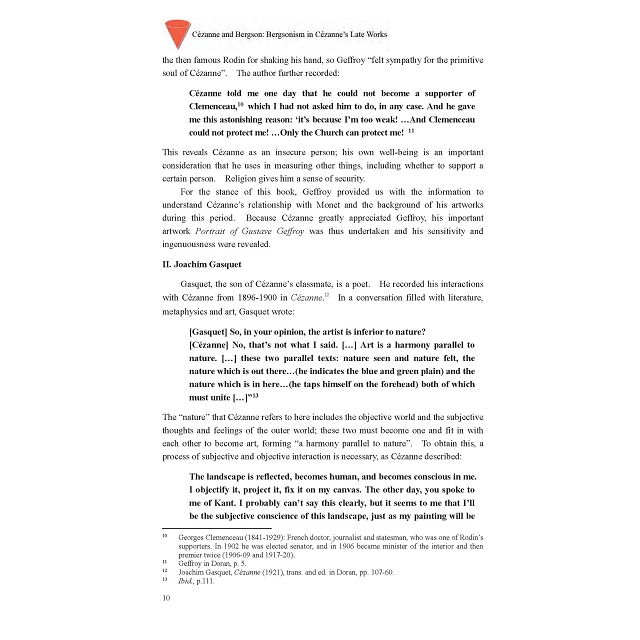






商品評價